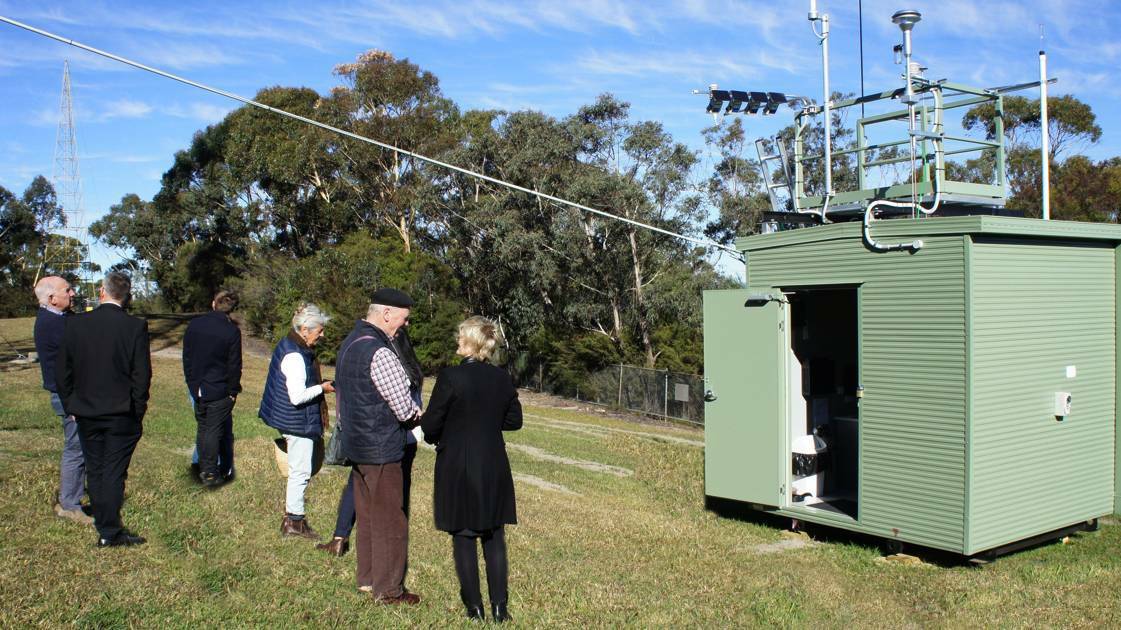
The NSW Environment Protection Authority has released their 2019 Winter and Spring reports on the Blue Mountains and Lithgow Air Watch program.
Subscribe now for unlimited access.
$0/
(min cost $0)
or signup to continue reading
The Blue Mountains and Lithgow Air Watch project is a 12 month community initiated research project, that aims to provide a better picture of air quality in the region. The project is set to come to an end later next month.
A NSW EPA spokesperson said that the winter air quality report indicated air across the region was "generally good" with air quality being within the national health-based air quality standards on all days.
"In Spring, a combination of bushfires and dust storms resulted in a decline in air quality on some days between October and November 2019, with air quality exceeding the air quality standard on these days," they said.
The Winter findings from June to August 2019 show that the KOALAs (Knowing Our Ambient Local Air Quality), located at Katoomba, Lithgow, Springwood and Wentworth Falls, show that median particulate concentrations appear to be higher in Springwood than the other locations.
The report states that pre and post co-location data will need to be more closely examined at the end of the project to analyse the differences between townships, as well to address for potential drift in sensors over time.
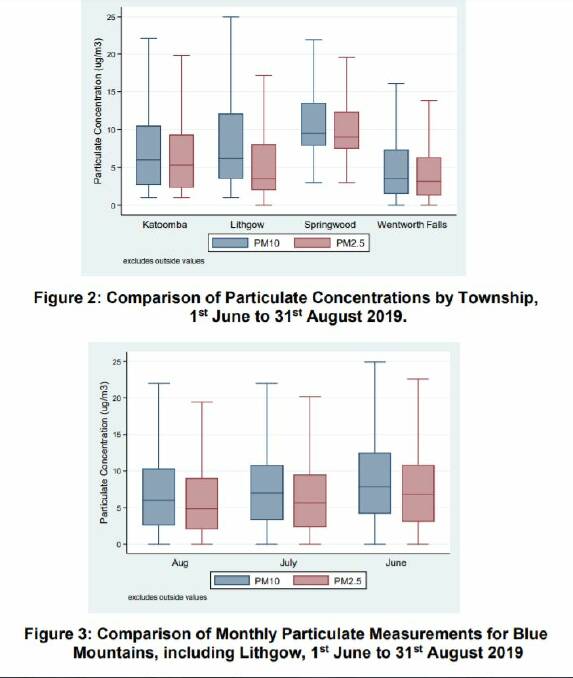
There was little variation of air quality between the towns of Lithgow, Katoomba and Wentworth Falls as well as little variation month by month.
According to the report it was an unseasonably warm winter which may have impacted on the bimodal peak due to lower usage of solid fuel heaters.
It stated that further observation across all seasonal periods will be needed to investigate the potential sources associated with these peaks such as vehicle traffic or use of wood burning stoves, both of which produce the combustion pollutants of PM2.5 and CO.
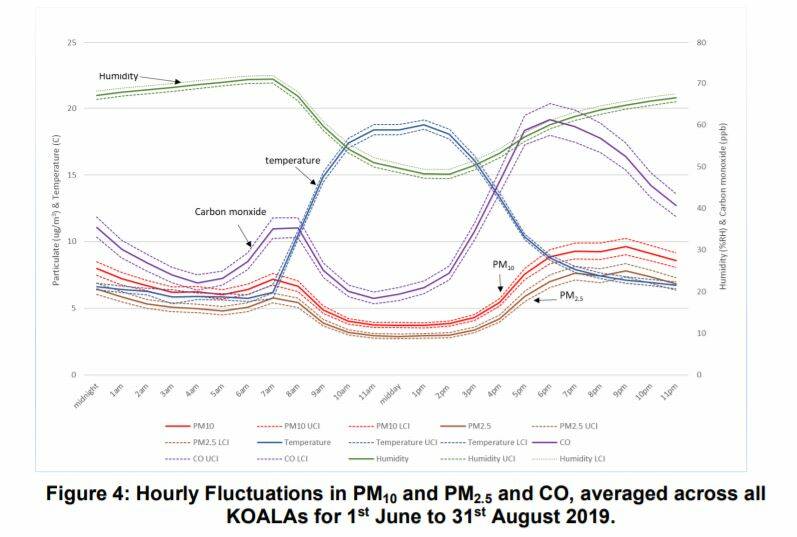
The hourly carbon monoxide (CO) levels were extremely low, typically less than 100 ppb (0.1 parts per million) averaged over an hour, and at the limits of detection for the sensor.
The sites where CO displayed the greatest variability were South Lithgow and Wentworth Falls, but overall there was no significant difference between CO levels by either township or month.
The winter period findings indicate particulate exposure in Katoomba is low and that concentrations of ozone, sulphur dioxide, carbon monoxide, nitrogen dioxide were extremely low in relation to the health based air quality standards.
The Spring findings from September to November 2019 shows that air quality in the region declined as the months progressed.
The decline in air quality is attributed to the bushfires and dust storms.
The daily average for November PM2.5 concentrations were significantly higher in comparison to winter 2019, while PM10 concentrations were significantly higher for October and November in comparison to winter 2019.
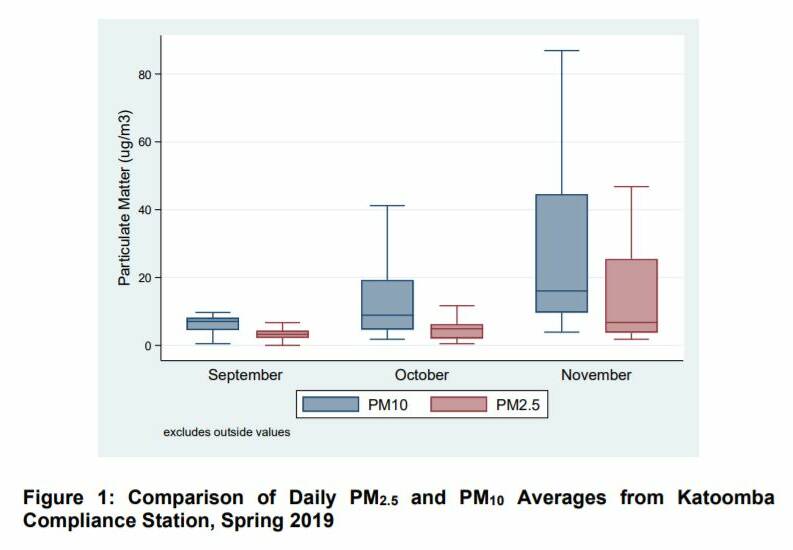
PM10 particulate concentrations exceeded the healthy air quality standard of 50 g/m3, averaged over 24-hours, on five days (peak 122 g/m3) in November 2019.
There were also smaller peaks of greater than 40 g/m3 towards the end of October that coincided with dust storm events in the Sydney region.
Atmospheric PM2.5 concentrations exceeded the air quality standard of 25 g/m3, averaged over 24-hours, on nine occasions between October and November 2019, with a peak of 115 g/m3 on November 21.
According to the report the high particulate concentrations during these events pose a significant health risk to the respiratory health and wellbeing of residents, especially at-risk populations including children, the elderly, pregnant women and people with pre-existing health conditions.
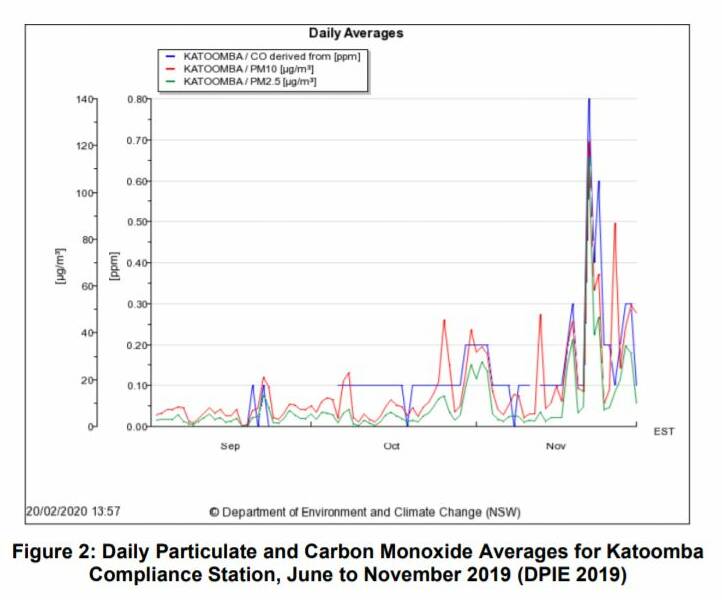
Carbon monoxide (CO) levels were significantly below the healthy air quality standard of 9ppm (8-hour average).
The readings for other air quality indicators including, nitrogen oxide (NO), nitrogen dioxide (NO2), sulphur dioxide (SO2) and ozone (O3) were all also considerably lower than air quality health guidelines.
The KOALA's showed that hourly airborne concentrations of fine and coarse particulates were similar to winter until November 2019 when bushfire smoke infiltrated the area.
In November, PM10 and PM2.5 measurements increased at all sites, with the highest concentrations occurring at Springwood.
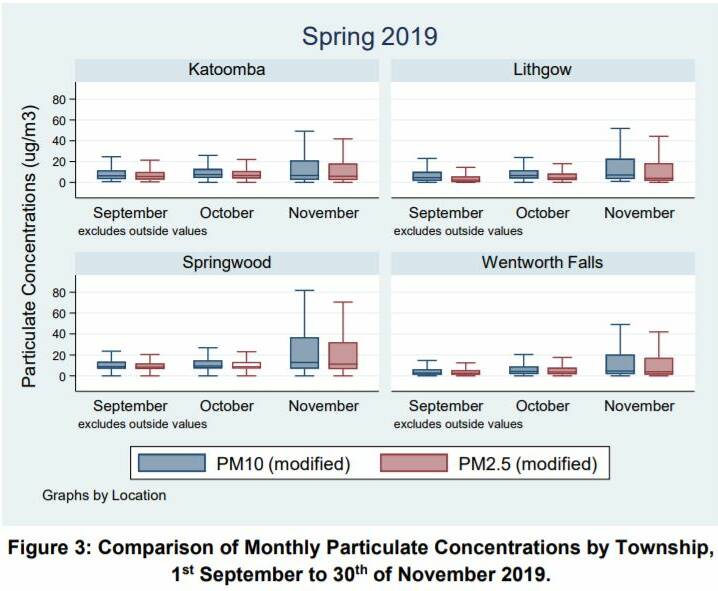
A slight rise in particulate measurements occurs around 6am to 7am and 5pm to 10pm.
The report states that the higher emission of combustion pollutants associated with the Summer 2019-2020 bushfires are likely to obscure smaller fluctuations associated with day to day human activities.
The spring period findings show that outside of bushfire and dust storm events there is little variation in air quality both within and between the Blue Mountains and Lithgow area.
During the dust storms and bushfires in October and November, the daily
air quality standards for PM25 (25g/m3) and PM10 (50 g/m ) were exceeded on nine and five days respectively, as measured at the Katoomba DPIE compliance station data.
Daily averages peaked at 115 g'm3 for PM2.5 which is greater than four times exposure limit, and 122 g/m3 for PM10 (over double exposure limit), and posed a significant risk to the respiratory health and wellbeing of residents in the region.
The Summer Report for 2019-20 is currently being prepared and a final report drawing on the 12 months of data from the Katoomba air quality monitoring station will be released at the end of the project.
"We will continue to work with the community and meet regularly with Air Watch steering committee," the EPA spokesperson said.
If you would like to read the reports you can find them here.


